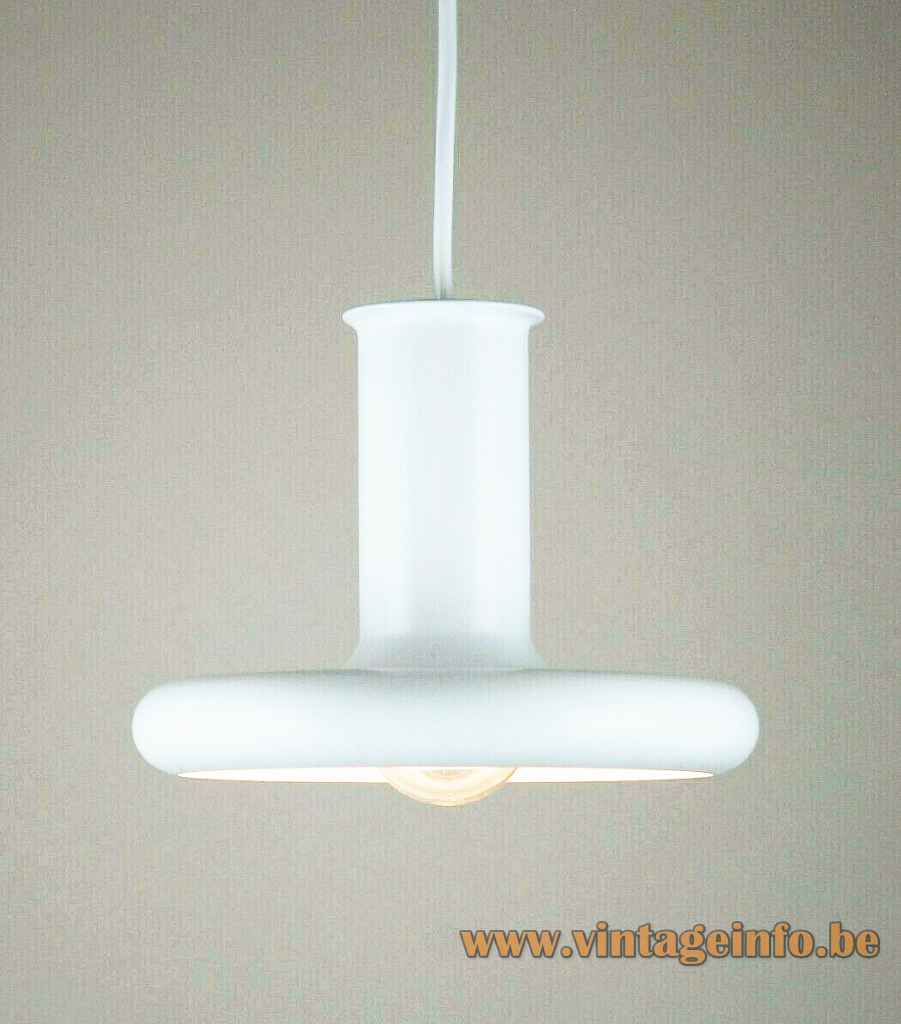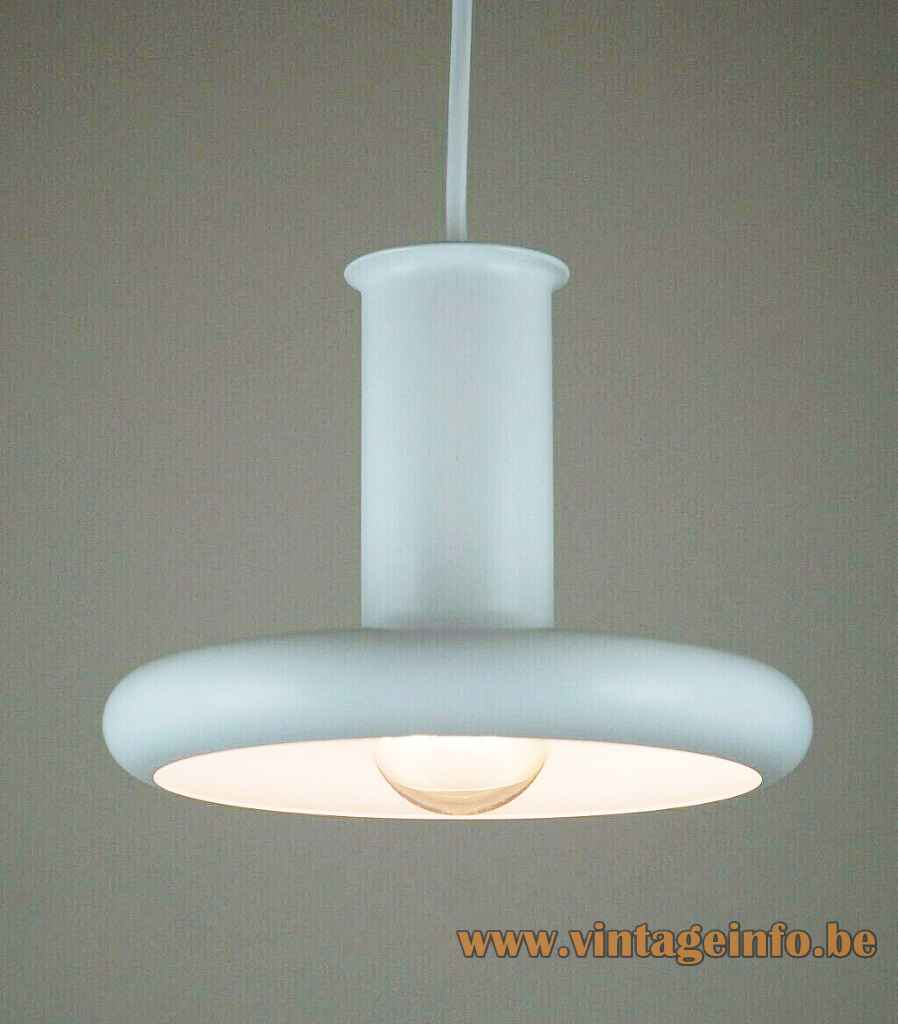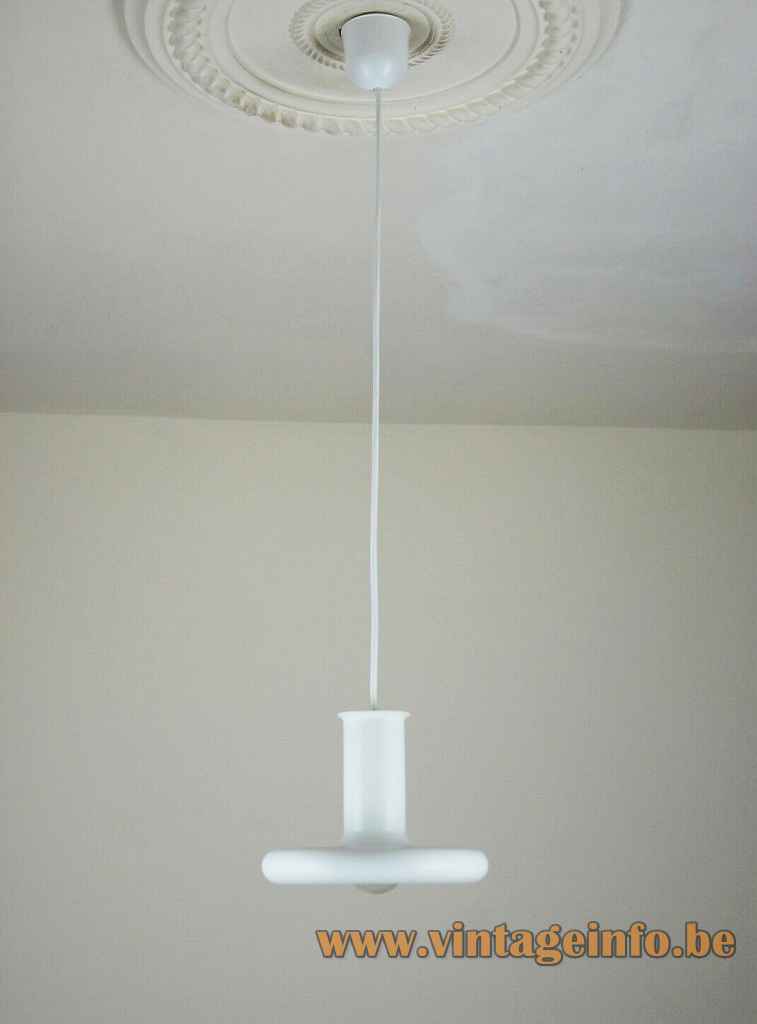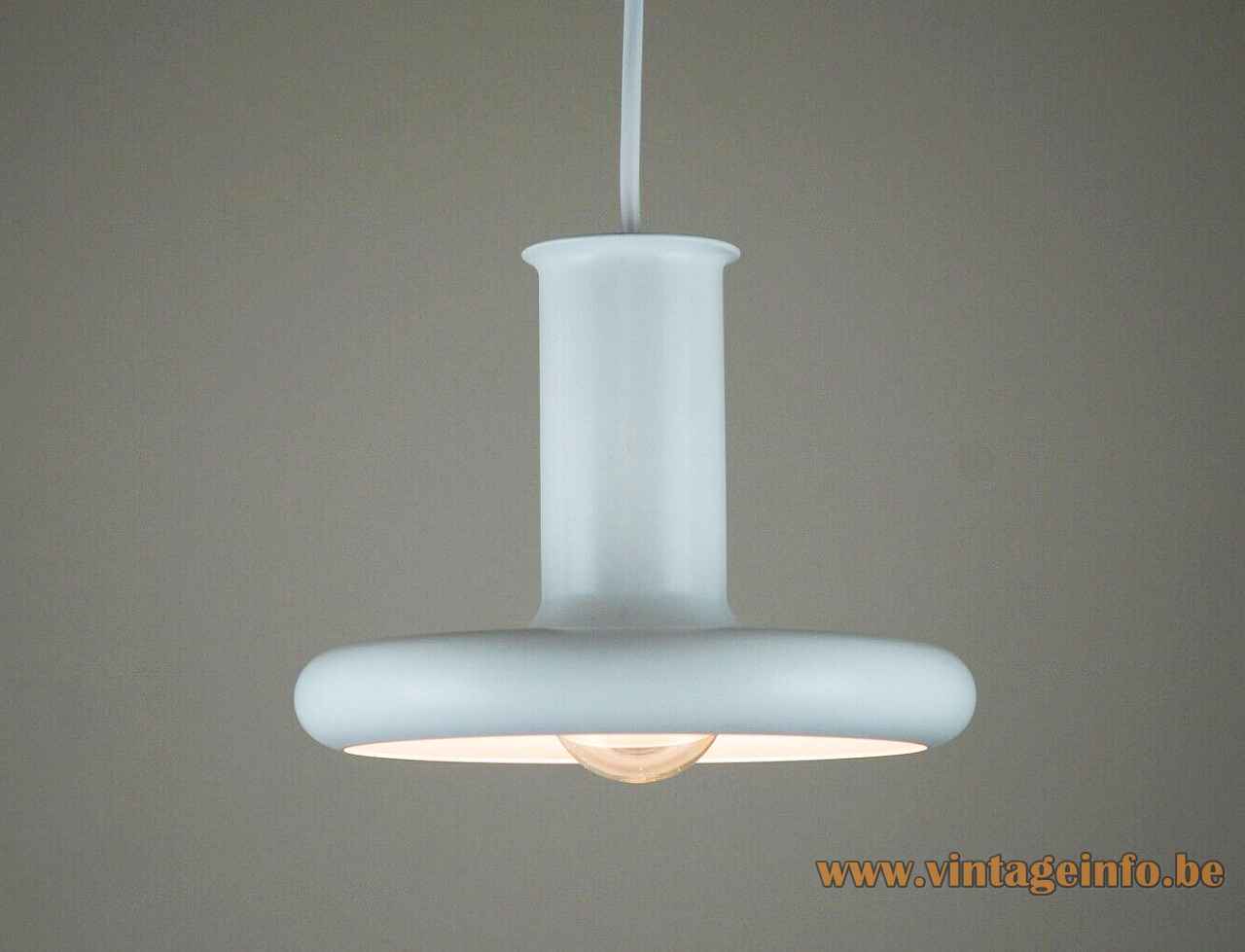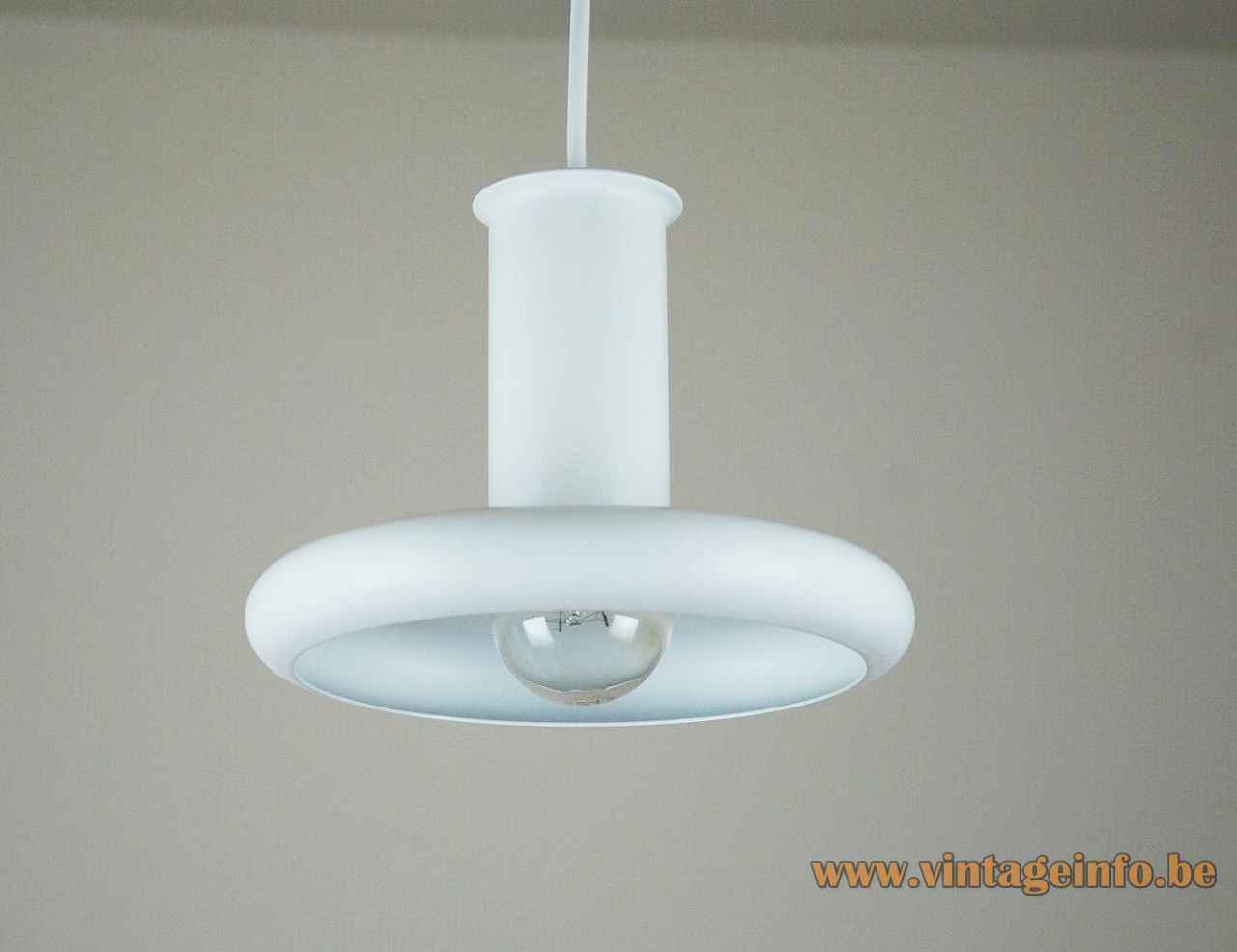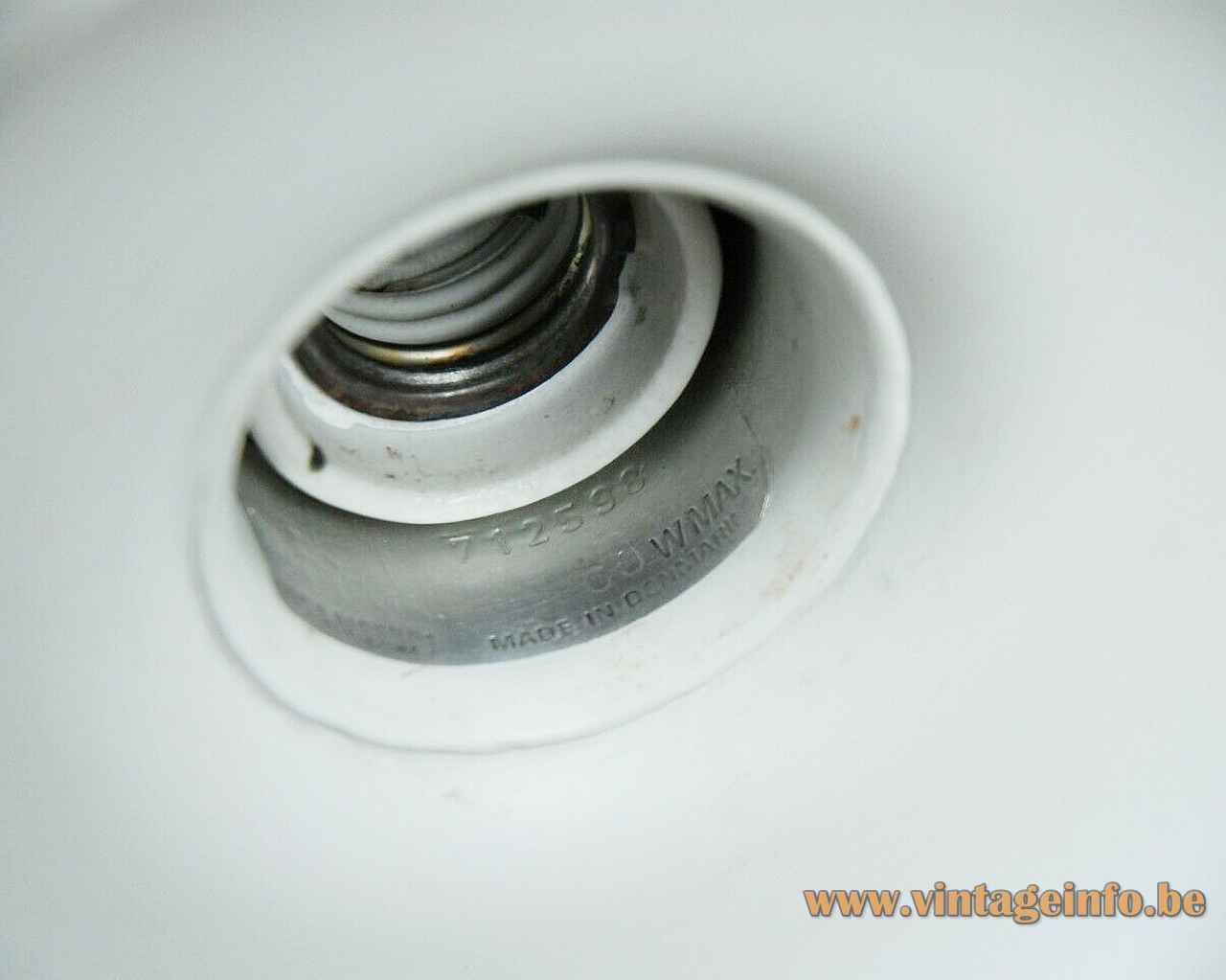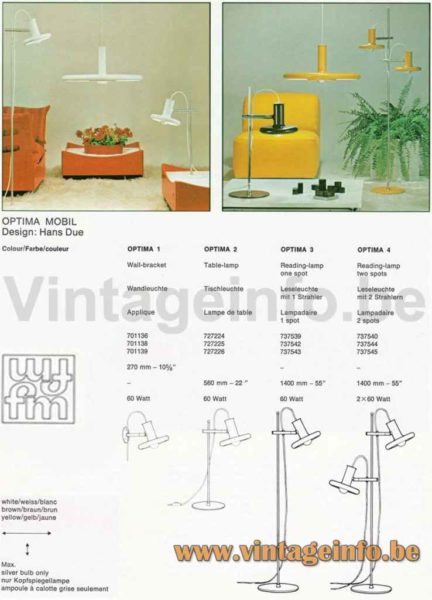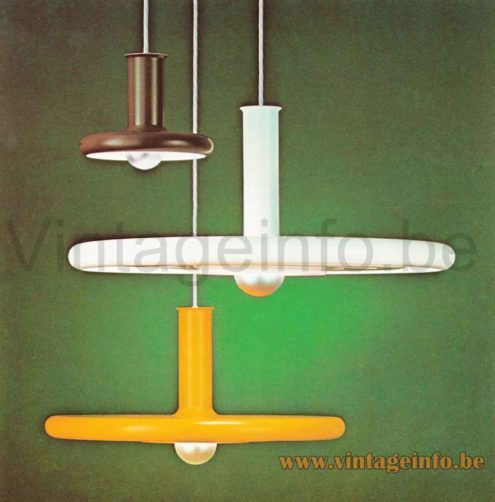Hans Due Optima Pendant Lamp – Fog & Mørup Catalogue picture
Many thanks to Craig from From our house to Bauhaus for the beautiful pictures and enthusiasm. You can find his shop on Ebay over here.
Hans Due Optima Pendant Lamp
Materials: White painted metal (aluminium) disc style lampshade with a white painted tube on top. The lampshade is also painted white inside. Some metal parts. White painted Bakelite E27 socket.
Cord Length: 120 cm / 47.24”
Height: 15 cm / 5.90”
Width: ∅ 20 cm / 7.87”
Electricity: 1 bulb E27, 1 x 60 watt maximum, 110/220 volt.
Any type of light bulb can be used, not a specific one preferred.
Period: 1970s – Mid-Century Modern.
Designer: Hans Due in 1972.
Manufacturer: Fog & Mørup A/S, Copenhagen, Denmark.
Other versions: The Hans Due Optima pendant lamp exists in 3 versions and several colours. This one is the smallest version. Also striped lamps exists. Table, wall and floor lamps were also made. A desk lamp can be found over here. The big pendant version over here.
Hans Due
Hans Due, born 5 January 1941 in Nyboder (Copenhagen), Denmark, is a graphics designer, painter and photographer. From 1956 until 1958 he was a pupil of illustrator Des Asmussen, painter August Toersleff and sculptor professor Gottfred Eickhoff.
From 1958 until 1963 Hans Due followed a training at a graphic design studio in Copenhagen. And in 1965 he graduated from the Graphic Arts Institute of Denmark in Copenhagen. In 1965 he went to Paris, France for a year to study graphics and photography.
From 1966 until 1974 Hans Due became a graphic designer and art director at various advertising and design companies. In 1974 Hans founded his company Due Design AS, where he was active until 2005.
For Fog & Mørup he designed the Optima lamp series, The Phister lamp and the Formel lamp series.
Since 2005 Hans Due is also active as a painter. His “New Realism” works have been exhibited in many places over the years.
The Optima pendant lamp and how it was created is described in the book Danish Lights – 1920 to Now on page 130.
Fog & Mørup
Ansgar Fog (1880-1930) and Erik Mørup (1879-1972) started their business together in 1904 as a metalwork wholesaler. Two years later they moved to the capital Copenhagen and began to focus on lighting production and over the years taking over several electrical and lighting companies. It was only in the early 1960s that Fog & Mørup really emerged as a key force in lighting design, following the company’s appointment in 1957 of Jo Hammerborg as head of design.
Important designers and architects that worked for the company are: Claus Bonderup, Torsten Thorup, Sidse Werner. Sophus Frandsen, Jørgen Bo, E. Balslev, Peter Avondoglio,. Karen Clemmensen, Ebbe Clemmensen, Hans Due and of course Jo Hammerborg himself.
Lyfa
In the late 1970s Fog & Mørup merged with Lyfa, another leading Danish lighting producer. In 1980 Jo Hammerborg retired. A few years later Lyfa-Fog & Mørup was taken over by Lyskær. The name changed to Lyskaer-Lyfa.
Lyskaer-Lyfa produced lights until 1991, when it was incorporated into Horn Belysning A/S from Aalstrup, also in Denmark, which was itself taken over in 2005 by Nordlux from Ålborg and at a large extent dismantled.
Horn Belysning
The Horn Belysning A/S company was founded in 1952 as a family business and was first named E.S. Horn. In 1963 it changed into Horn Belysning – Horn Lighting.
The company produced lights for IKEA and several other European retail chains. They designed lights but also imported lights from China. In the 1980s Horn was the second biggest light company in Denmark.
In 2005 the name changed into Lightyears, today owned by Republic of Fritz Hansen.
Links (external links open in a new window)
The Optima pendant lamp in the book Danish Lights – 1920 to Now
Nyboder, Copenhagen, Denmark – Wikipedia
Fog & Mørup – Wikipedia (in Danish)
Horn Belysnign history on Danish Vintage Design
The story of Fog & Mørup, Danish modern lighting’s superstar
